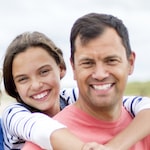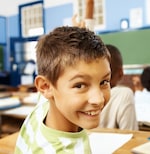Fight or Flight?
All of us experience anxiety at some point, even our children. Anxiety in children is very common. Biologically speaking, anxiety serves as a protective mechanism that can either cause us to panic and prevent us from entering into a dangerous situation, or help us escape from one. The concept is commonly referred to as “fight or flight.”
The sole function of this protective mechanism is to increase our mental alertness so we can effectively deal with the various life events and stressors that we encounter on a daily basis. These can be as simple as taking an exam, giving a presentation, playing in a school recital, competing in a sports game, or dealing with a conflict at home, just to name a few. With the right amount of anxiety, we are able to perform well and meet the demands of these events and stressors because our ability to think clearly and respond optimally is enhanced.
How common are anxiety disorders in children?
Anxiety disorders are one of the most common disorders in children and adolescents. According to the National Institute of Mental Health, 1 in 5 children suffers from anxiety disorders. Unfortunately, these disorders often go undetected and untreated. Getting your child the help he or she needs can decrease the negative impact of these disorders on mental health, academic and social functioning, as well as their persistence into adulthood.
If any of these challenges seem familiar, it may be time to seek treatment for your child. Anxiety in children can cause significant distress for your child and affect not only his or her mental, emotional, behavioral health, and social life but you and your families’ health as well.
What is the treatment for childhood anxiety?
It is important for your child to receive help from a behavioral health care professional as soon as you suspect your child is suffering from anxiety. Anxiety affects the wellbeing of the child, his or her mental, emotional, physical, and social self. It can also affect your child’s grades and ability to connect with others. Anxiety disorders in children are frequently associated with increased risk of failure in school.
The most commonly used and effective therapeutic approach for childhood anxiety is Cognitive Behavioral Therapy (CBT). CBT is a scientifically proven method of treatment based on the premise that how we think and act affects how we feel – that changing our distorted thoughts and dysfunctional behavior can positively change our emotions. For children with anxiety, the primary focus in CBT is typically helping children break their cycle of anxiety and provide healthy strategies for anxiety management.
TESTIMONIAL

Our sessions with Dr. Eaton have been life-changing for our family.

My son has more confidence and his grades have improved.

I appreciate everything you’ve done for me. I wouldn’t be here without you.
Signs of Childhood Anxiety
Here are some common symptoms to help you identify anxiety in children.
Does your child worry excessively about a variety of things, such as grades, family, school, or friends?
Does your child constantly seek approval or reassurance from you or others?
Does your child have an irrational fear of a specific object or situation?
Does your child feel miserable when his or her loved ones are not near?
Does your child worry or think that something bad is going to happen to you?
Is your child afraid of social or performance situations and activities?
